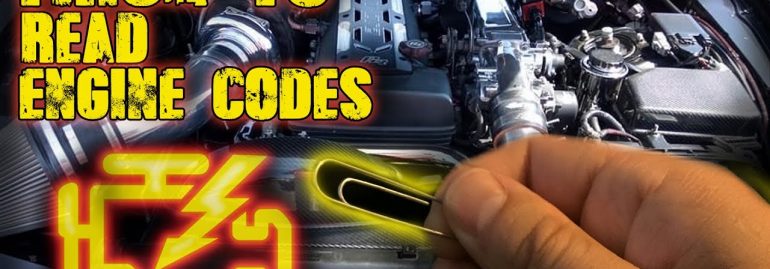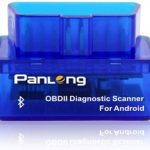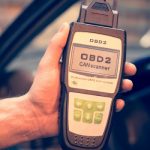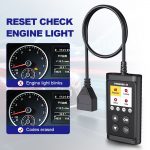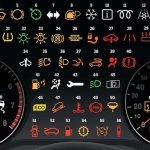Welcome to “The Ultimate Guide to OBD-II Scanners: A Professional Perspective,” where we delve into the world of On-Board Diagnostics (OBD) and unveil the secrets behind these innovative scanning tools. As professionals in the automotive industry, we understand that having access to accurate and reliable diagnostic information is paramount when it comes to efficiently diagnosing and fixing vehicle issues.
In this comprehensive guide, we will take you on a journey through the intricacies of OBD-II scanners – their features, capabilities, and how they can empower both enthusiasts and professionals alike in uncovering hidden car troubles.
Whether you’re a seasoned mechanic or simply an avid car owner seeking deeper insights into your vehicle’s health, this guide promises to equip you with invaluable knowledge that will enable you to make informed decisions about your automobile’s maintenance and repairs. So fasten your seatbelts as we embark on an educational voyage crafted specifically for those who appreciate professionalism and precision within the automotive realm.
Understanding OBD-II: A Brief History and Overview
OBD-II, short for On-Board Diagnostics II, is a standardized system used in vehicles to diagnose and monitor the performance of various components. It was introduced in the 1990s as an improvement over the previous OBD-I system.
The main purpose of OBD-II is to identify any issues or malfunctions that may affect a vehicle’s emissions output or overall performance. By connecting an OBD-II scanner to a car’s diagnostic port, mechanics can access valuable data about the engine, transmission, brakes, and other vital systems.
Unlike its predecessor, OBD-II provides comprehensive information that helps technicians pinpoint problems more efficiently. It also includes universal codes known as Diagnostic Trouble Codes (DTCs) which indicate specific faults within a vehicle’s subsystems. With this standardized system in place, it becomes easier for automotive professionals to diagnose and fix issues across different makes and models of cars.
Key Features to Look for in an OBD-II Scanner
- Compatibility: Ensure the scanner is compatible with your vehicle’s make, model, and year. Not all scanners can diagnose every car.
- Live Data Display: Look for a scanner that provides real-time data on your vehicle’s performance. This feature allows you to monitor various parameters while driving.
- Code Reading and Clearing: The ability to read diagnostic trouble codes (DTCs) and clear them is essential. It helps identify issues and enables you to reset the check engine light if necessary.
- Wide Code Coverage: Opt for an OBD-II scanner that supports multiple protocols, including CAN (Controller Area Network) and ISO15765-4 (CAN-BUS), as these are commonly used in modern vehicles.
- Advanced Functions: Consider scanners with additional features like emission testing readiness checks, freeze frame data capture, O2 sensor testing, or EVAP system diagnostics for more comprehensive analysis.
- User-Friendly Interface: A well-designed interface with easy-to-navigate menus is crucial for quick and efficient troubleshooting sessions.
- Compact Size & Durability: Pick a compact and durable scanner that can withstand rough handling without sacrificing functionality or longevity.
The Best OBD-II Scanners on the Market: Reviews and Recommendations
When it comes to OBD-II scanners, there are several options available in the market. Choosing the right one can be a daunting task, especially if you’re not familiar with these devices. To help make your decision easier, we’ve compiled a list of the best OBD-II scanners that professionals recommend:
- Autel AutoLink AL319 – This scanner offers basic features at an affordable price. It can read and clear engine codes, display live data stream, and perform I/M readiness tests. Its compact size and easy-to-use interface make it ideal for beginners.
- BlueDriver Bluetooth Professional OBDII Scan Tool – Compatible with both Android and iOS devices, this wireless scanner provides advanced diagnostic capabilities. It not only reads and clears codes but also provides detailed repair reports based on its extensive database of fixes from certified mechanics.
- Innova 3160g Pro Diagnostic Scanner – Designed for professional use, this scanner has a large color screen that displays comprehensive vehicle information in real-time. It offers multiple functions like ABS/SRS diagnostics, battery reset, oil light reset, and more.
Remember to choose an OBD-II scanner based on your specific needs and budget constraints.
How to Choose the Right OBD-II Scanner for Your Needs
When selecting an OBD-II scanner, it’s important to consider a few key factors. First, determine what type of vehicle you will be using the scanner on. Some scanners are designed specifically for certain makes and models or may only work with certain protocols. Make sure the scanner you choose is compatible with your vehicle.
Next, assess your needs and goals. Are you a professional mechanic looking for advanced diagnostic features? Or are you an average car owner who simply wants to monitor basic engine performance? Understanding what features you require will help narrow down your options.
Lastly, consider the ease of use and user interface of the scanner. Look for one that is intuitive and has clear instructions. Additionally, check if there are any software updates available or if the manufacturer offers good customer support should any issues arise.
When choosing an OBD-II scanner:
- Consider compatibility with your specific vehicle.
- Assess your needs and required features.
- Evaluate ease of use and available support options from manufacturers.
Making the Most of Your OBD-II Scanner: Tips and Tricks
Tips and Tricks for Making the Most of Your OBD-II Scanner
- Regularly scan your vehicle: Make it a habit to consistently use your OBD-II scanner on your vehicle, even if no warning lights are illuminated. Regular scanning can help identify any hidden issues or potential problems before they escalate into major repairs.
- Use freeze frame data: When troubleshooting a specific issue, take advantage of the freeze frame data feature on your OBD-II scanner. This captures important information at the time a fault code is triggered, providing valuable insights into what may have caused the problem.
- Understand trouble codes: Familiarize yourself with common trouble codes associated with different parts of your vehicle. Knowing what each code means will allow you to better comprehend diagnostic reports from your OBD-II scanner and take appropriate action.
Other Helpful Tips
- Research before making repairs: If you’re planning to fix issues identified by your OBD-II scanner yourself, be sure to research thoroughly beforehand. Consult repair manuals or reputable online sources to understand proper procedures and techniques.
- Keep software updated: Many modern scanners offer software updates that improve functionality and compatibility as well as provide access to new features. Stay up-to-date by regularly checking for these updates and installing them as needed.
Troubleshooting Common Issues with OBD-II Scanners
No Communication with the Vehicle’s Computer
- Ensure that the scanner is properly connected to the vehicle’s OBD-II port.
- Check if the vehicle’s ignition switch is turned on, and all accessories are off.
- Verify that there is power reaching both ends of the scanner connection cable.
Scanner Not Recognizing Vehicle System
- Confirm that the scanner supports your specific vehicle make and model.
- Make sure your scanning tool software is updated to its latest version.
- Double-check if you have selected the correct protocol for communicating with your vehicle.
Error Codes Displayed but Unclear Meaning
- Refer to an OBD-II code list or lookup website/app to decode any error codes received from your scan tool.
- Perform a internet search using a combination of relevant keywords like “OBD-II” along with each error code shown on your device, which may provide further insights into their meaning.


